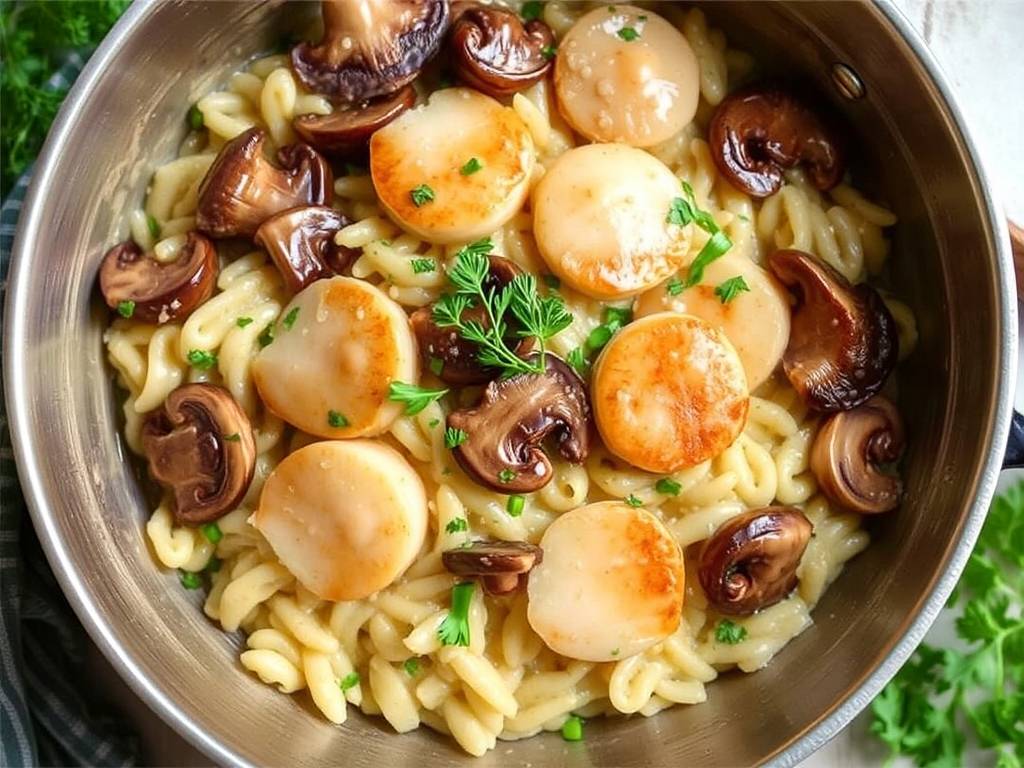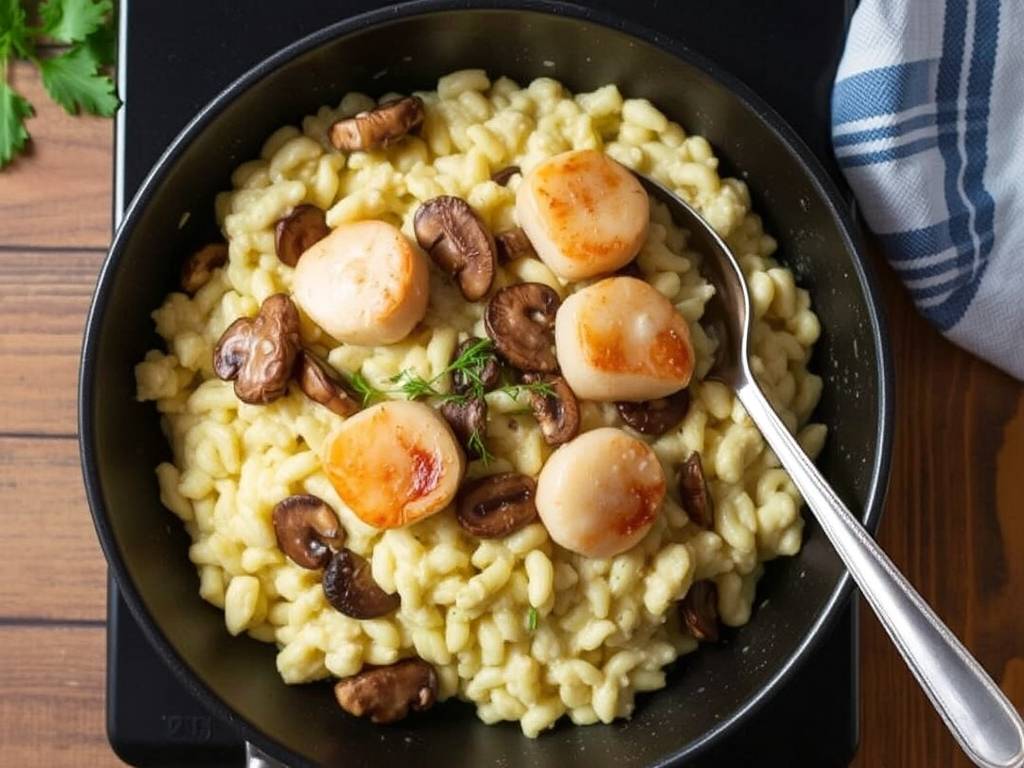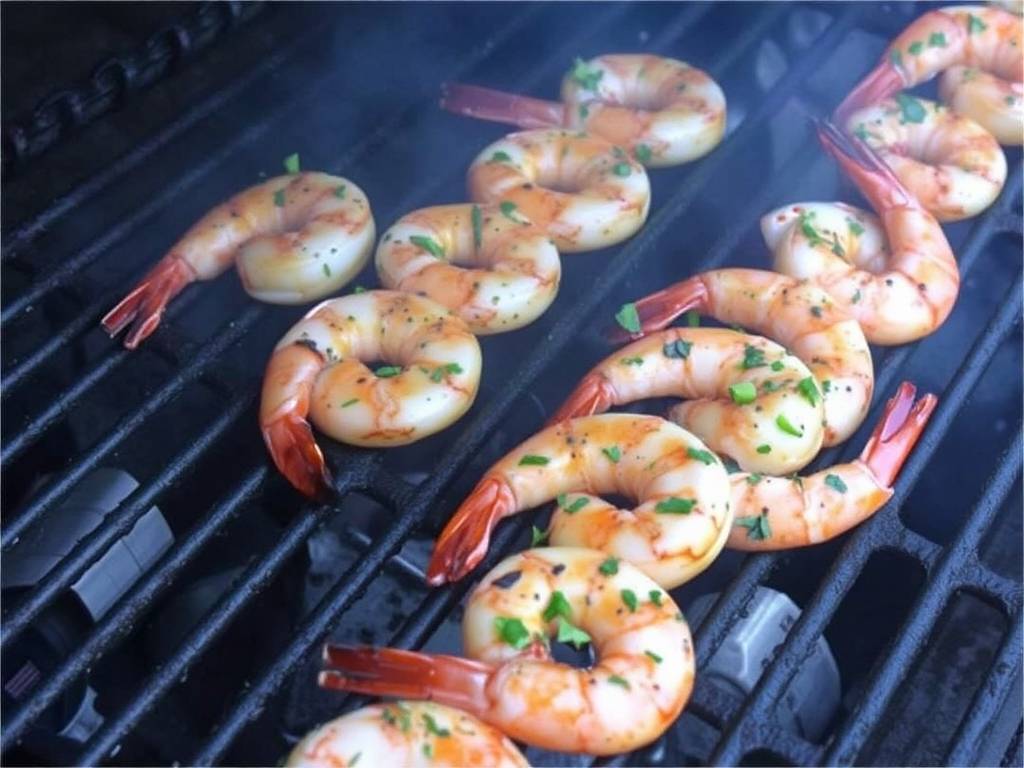The Art of Crafting a Luxurious Seafood Risotto with Scallops and Mushrooms
There is a certain alchemy to a perfect risotto. It is a dish that demands patience, attention, and a deep understanding of how simple ingredients can be transformed into something sublime. Among the pantheon of risotto variations, the combination of sweet, delicate scallops and earthy, umami-rich mushrooms stands as a testament to culinary elegance. This is not a quick weeknight meal; it is a ritual, a dance between the cook, the rice, and the broth. Mastering this dish will not only provide a spectacular meal but also impart fundamental cooking skills that transcend the recipe itself.
The journey to an exceptional Seafood Risotto with Scallops and Mushrooms begins long before the first ingredient hits the pan. It begins with understanding and sourcing the core components. Each element plays a critical role in the final symphony of textures and flavors.

The Foundation: Selecting Your Ingredients
-
The Rice: The Heart of the Matter The star of any risotto is the rice. Not just any rice will do. You need a short or medium-grain rice high in starch, which is slowly released during the cooking process to create the characteristic creamy texture without the need for heavy cream. The three champions of risotto are:
- Arborio: The most widely available variety. It has a plump, medium-grain and releases starch readily, making it forgiving for beginners.
- Carnaroli: Often called the "king of risotto rice." It has a firmer core and a higher starch content than Arborio, resulting in a creamier yet more al dente (to the tooth) finish. It is less likely to become mushy.
- Vialone Nano: A smaller, denser grain that absorbs flavors exceptionally well. It is prized for seafood risottos in particular. For this recipe, Carnaroli is highly recommended for its superior texture and resilience.
-
The Scallops: Jewels from the Sea Seek out dry-packed sea scallops. "Dry-packed" means they have not been treated with sodium tripolyphosphate (STP), a solution that makes them absorb water and appear plumper. STP-treated scallops will steam instead of sear, releasing their water into your risotto and preventing a beautiful caramelized crust. Dry-packed scallops will have a natural, sweet scent of the sea and will sear to a gorgeous golden-brown. Look for scallops labeled "U10" or "U15," indicating there are 10 or 15 scallops per pound—these are large, meaty, and perfect for this dish.
-
The Mushrooms: The Earthy Anchor While common cremini mushrooms work well, using a blend can elevate the dish. Consider a mix of cremini and shiitake for a deeper, more complex earthiness. For a truly luxurious version, a small handful of rehydrated dried porcini mushrooms is transformative. The soaking liquid from the porcinus, once strained, can be used as part of your broth, infusing the entire risotto with an intense, woodsy flavor.
-
The Aromatics and Liquids
- Aromatics: A classic soffritto of finely chopped yellow onion or shallot forms the base. Garlic is essential. Fresh, flat-leaf parsley and a sprig of fresh thyme will add brightness.
- Wine: A dry white wine is non-negotiable. Its acidity cuts through the richness and adds complexity. A Sauvignon Blanc, Pinot Grigio, or an unoaked Chardonnay are excellent choices.
- Broth: Use a high-quality, low-sodium seafood stock or broth. This is critical. A weak, bland broth will result in a weak, bland risotto. If you have the time, making a simple shrimp-shell stock is a game-changer. Alternatively, a good quality chicken or vegetable broth can be used, but seafood broth is ideal. You will need approximately 4-6 cups, kept at a gentle simmer in a separate pot throughout the cooking process.
The Ritual: A Step-by-Step Guide to Perfection
Step 1: The Mise en Place (Everything in its Place) Risotto waits for no one. Before you turn on the heat, have all your ingredients prepped:
- Finely chop 1 small onion or 2 large shallots.
- Mince 2 cloves of garlic.
- Clean and slice 8 ounces of mushrooms (if using dried porcini, soak them in 1 cup of hot water for 20 minutes, then strain, reserving the liquid, and chop the rehydrated mushrooms).
- Pat the scallops (about 1 pound) completely dry with paper towels. Season both sides generously with salt and pepper.
- Chop a 1/4 cup of fresh parsley.
- Grate 1/2 to 3/4 cup of high-quality Parmigiano-Reggiano cheese.
- Heat your broth (4-6 cups) in a saucepan and keep it at a bare simmer.
- Measure out 1 1/2 cups of Carnaroli rice and 1/2 cup of dry white wine.
Step 2: Searing the Scallops This is a crucial step that many risotto recipes get wrong by adding the scallops raw at the end. Searing them first achieves two things: it creates a flavorful Maillard reaction crust, and it allows you to cook them to the perfect temperature without overcooking them in the risotto.
- In a large, heavy-bottomed skillet or Dutch oven, heat 1 tablespoon of olive oil and 1 tablespoon of butter over medium-high heat until the butter foams and subsides.
- Carefully place the scallops in the pan, ensuring they are not touching. Do not move them for 1.5-2 minutes.
- Peek underneath; they should have a deep golden-brown crust. Flip and cook for another 60-90 seconds until just firm to the touch. They should be opaque but still tender in the center.
- Immediately remove them to a plate. They will be added back at the very end.
Step 3: Building the Flavor Base
- In the same pan, reduce the heat to medium. You will have lovely browned bits (fond) from the scallops. Add another tablespoon of butter and a drizzle of olive oil.
- Add the chopped onions/shallots and a pinch of salt. Sweat them for 4-5 minutes until soft and translucent, but not browned.
- Add the sliced mushrooms (and the chopped rehydrated porcini, if using). Cook, stirring occasionally, until the mushrooms have released their liquid and started to brown, about 6-8 minutes.
- Add the minced garlic and cook for just 30 seconds until fragrant.
Step 4: The Toast and the Deglaze

- Add the 1 1/2 cups of Carnaroli rice to the pan. Stir constantly for 1-2 minutes, ensuring each grain is coated in the fat and toasted. This process, called tostatura, seals the outer layer of the rice, helping it maintain a slight bite and absorb liquid gradually.
- Pour in the 1/2 cup of white wine. It will sizzle and steam vigorously. Stir continuously until the wine is fully absorbed by the rice.
Step 5: The Ladle-by-Ladle Dance
- Now, begin adding the warm broth. Add one ladleful (about 1/2 cup) to the rice. Stir gently but consistently in a figure-eight motion. The motion helps agitate the rice, encouraging it to release its starch.
- Wait until the liquid is almost fully absorbed before adding the next ladleful. The risotto should maintain a gentle simmer throughout. This process should take 18-25 minutes. Do not rush it.
Step 6: The Final Adjustments and Mantecatura
- After about 18 minutes, start tasting the rice. It should be al dente—cooked through but with a slight resistance in the center.
- Once you've reached this stage and the risotto has a creamy, flowing consistency (it should spread on the plate, not pile up), it's time for the final touch: mantecatura.
- Remove the pan from the heat. Stir in the remaining 2 tablespoons of cold butter and the grated Parmigiano-Reggiano. This step, done off the heat, emulsifies the fat and starch into an incredibly creamy, glossy sauce.
- Gently fold in the seared scallops and most of the chopped parsley. Let it rest for one minute—this allows the risotto to settle and the scallops to warm through.
Step 7: Plating and Presentation Serve immediately in warm, shallow bowls. The risotto should flow smoothly onto the plate ("all'onda" - wavy). Garnish with the remaining parsley and an extra grating of Parmigiano-Reggiano. A final drizzle of high-quality extra virgin olive oil is a beautiful finishing touch.
Troubleshooting and Pro-Tips
- My risotto is too soupy: You added too much liquid at the end. Continue cooking for another minute or two to evaporate the excess. Remember, it will continue to thicken off the heat.
- My risotto is too thick/stodgy: It has either overcooked or didn't have enough liquid. Stir in a small ladleful of warm broth or even a splash of hot water to loosen it to the desired consistency.
- The rice is crunchy in the middle: You haven't cooked it long enough. Continue adding broth and cooking until it reaches the al dente stage.
- It's not creamy enough: You may not have stirred enough to release the starch, or the heat was too high/low. The mantecatura (butter and cheese off the heat) is your final tool to achieve creaminess.
Creating a perfect Seafood Risotto with Scallops and Mushrooms is a rewarding culinary achievement. It is a dish that speaks of care, quality, and a respect for the ingredients. From the initial sear of the scallop to the final, creamy spoonful, every step is a building block towards a harmonious and deeply satisfying meal. So, pour yourself a glass of that white wine, embrace the process, and prepare to create a restaurant-worthy masterpiece in your own kitchen.






发表评论